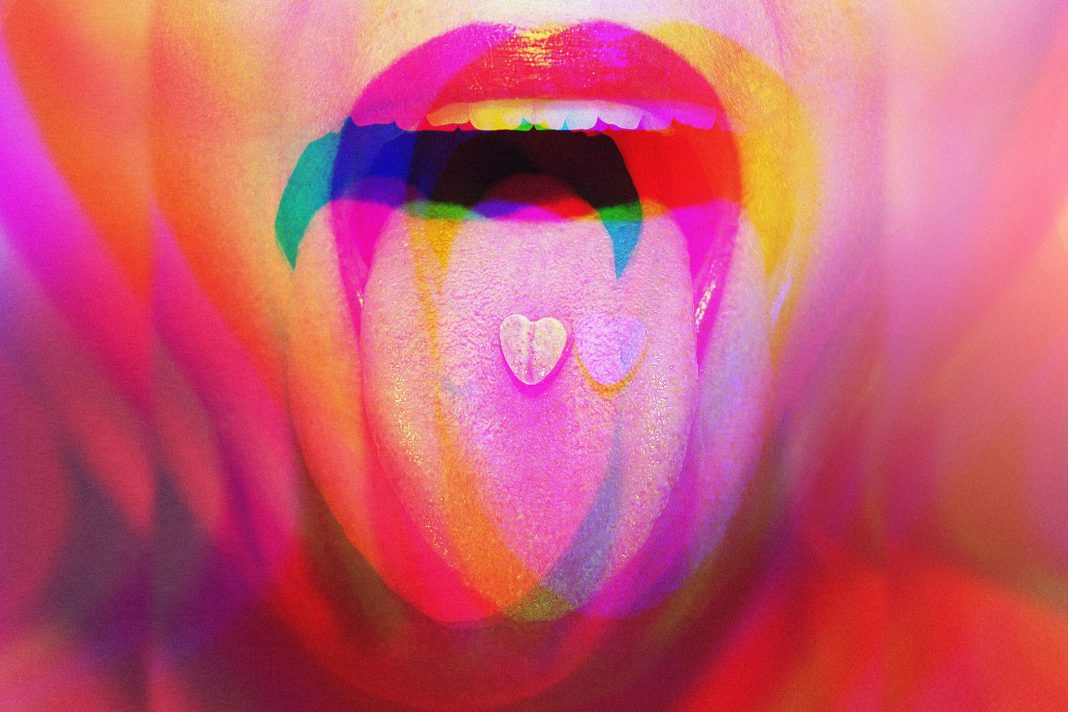A refreshing new book called I Feel Love – written by Rachel Nuwer – explores the incredible history of MDMA. According to Nuwer, this party-drug has a bright future, and one that may follow the likes of cannabis and its eventual mass legalization. Whilst MDMA now has the reputation of being the somewhat dangerous love-drug (followed by a terrible comedown), there is far more to it than that – according to this new explorative book.
If you look at the history of ecstasy, you can see that its therapeutic benefits were being explored long ago. In this article we’re going to be debunking a lot of myths surrounding MDMA, delving into its intriguing history, and discussing its future. Let’s go.
What is MDMA?
In the world of fake news and hyper-reality, it’s hard to sometimes remember what a drug actually is at its most basic level. MDMA, which stands for 3,4-methylenedioxymethamphetamine, is a psychoactive compound classified as an entactogen and empathogen. It belongs to the amphetamine family of drugs and has stimulant and hallucinogenic effects – although it would definitely be considered part of the “upper” family. MDMA is commonly known by various street names, such as “ecstasy” or “Molly.” In its pure form, MDMA typically appears as a crystalline powder or in pill form. It is consumed orally and can be swallowed or crushed and snorted.
Effects
The effects of MDMA typically last for a few hours, and users often report enhanced mood, increased empathy and sociability, heightened sensory perception, and a sense of emotional openness. There’s a reason why this substance is known as the “love drug”. People often have feelings of love for people around them, driven by this increased dopamine. MDMA primarily acts by increasing the release of neurotransmitters such as serotonin, dopamine, and norepinephrine in the brain, leading to feelings of euphoria, heightened sensory perception, and increased energy.
It also affects other neurotransmitter systems, which contribute to its unique psychoactive effects. When an individual is “coming up” – and the effects are at their most potent – it is possible to slightly hallucinate. The New Scientist reports on an experiment that was done with rats and MDMA. Whilst I don’t especially support animal trials of this kind, the results were rather interesting. It reads:
“Clubbers who take the “love drug” ecstasy really might be “loved up”. Studies in rats suggest the drug causes a brain surge of oxytocin – the hormone that helps bond couples, as well as mothers to their babies… Iain McGregor… and his colleagues studied the effects of ecstasy in rats, which, like people, become more sociable on the drug. “It’s very characteristic behaviour. They lie next to each other and chill out.”
Interestingly, scientists have also discovered an increase in oxytocin in males after orgasm. This is perhaps why men often feel a sense of love whilst on MDMA, but not of sexual desire. In a sense, it’s a more pure adoration that is felt by those taking the substance.
The History of MDMA
The history of MDMA is an intriguing one, and is often misinterpreted. When you describe ecstacy to someone, it almost sounds too good to be true. A drug that can make you love everyone and everything. But, in recent years, there have been many reports that show MDMA in a negative light, which has certainly damaged its public reputation. Horror stories of people overdosing, de-hydrating, over-hydrating – these are very common nowadays. Whilst these accounts are true, the focus on the negative proves that we may have another victim of the “war on drugs” on our hands. But let’s take a look back at how this substance came into the public eye.
The Beginning
MDMA was first synthesised in 1912 by the German pharmaceutical company Merck, led by the chemist Anton Köllisch. At that time, it was not initially recognised for its psychoactive properties. Instead, it was primarily used in research related to blood clotting. The substance was then basically forgotten about until the 1950s, when it was picked up again as a potential energy booster for fighter pilots. MDA (a close relative of MDMA) was then tested by CIA agents during the 50s as a potential truth serum against Soviet agents – LSD was also given the same tests.
In the same decade, a 42 year old tennis player checked into a hospital in Manhattan to aid his depression. Little did he know, this hospital was being controlled by the US army and was being used to test mind-altering drugs. What followed was heartbreaking. He was given far too much MDA and fell into a coma and died. Whilst a cover up was attempted, the truth came out eventually and his family sued the government in 1987. This resulted in the banning of the drug in 1971 (the Controlled Substances Act), until chemists slightly altered it and created MDMA a few years later.
The Late 20th Century
As the 20th century came to an end, MDMA was being used by the scenes to test various therapies for people suffering from trauma and dissociation. However, at the same time, clubs were beginning to see more of this substance as a party drug. In the 80s, the Starck Club in Dallas was one of the first hotspots. The Guardian writes:
“You could buy [ecstasy] from the bartenders or the coat check girl, and it made the Starck Club a really special place where everyone was just loved up on ecstasy on the dancefloor, hugging it out. It was a place that welcomed anyone, regardless of race, orientation, gender or the way you looked.”

Despite the love and unity that MDMA brought, governments began to crack down on this substance. Similar to cannabis and LSD, it was becoming the iconic drug of the counterculture. Instead of focusing on the intriguing properties of the substance, news outlets were looking into the dangers. Media outlets were only interested in overdose stories. Yet again, a drug was being demonised by the establishment due to its eye-opening effects.
This isn’t to say that MDMA cannot be a dangerous substance, it can be. But usually it’s what people mix the drug with that makes it riskier to consume. Dehydration is also certainly a problem – when individuals take MDMA, dance a lot, and forget to drink water. In addition, mixing the substance with other drugs can also cause fatalities in large quantities. There was also a test done in 2002 that found that MDMA causes brain damage in monkeys and baboons. However, it was later revealed that the drug they used for the experiment was actually crystal meth, not Mandy.
This is now known as “the great retraction”. In essence, of course MDMA has its faults and dangers. It must be used with caution, like many other substances. However, if the education was there, these incidents would happen far less. It is this conservative and hardline approach to drug education that means that many individuals use these substances with little knowledge and almost in an act of rebellion. Normalizing and even celebrating these experiences would bring about more safety. The first-time taking Mandy is a beautiful one, especially if it’s done with caution and with people you love.
The Future of MDMA
It seems then, according to Nuwer, that there was a period of time in the 70s and 80s where MDMA may have been taken more seriously as a therapeutic substance. However, due to the reputation of it being a party drug, this lost momentum and this research was stunted. Instead, MDMA was vilified and it became yet another underground substance. However, in recent years, this research has been opened back up. MDMA-assisted therapy in treating depression and PTSD have had positive results. WebMD writes:
“One study found that 67% of people reported that they no longer met the criteria for PTSD a year after they finished MDMA-assisted therapy.”
The effects of the substance – including empathy, self-awareness and an ability to open up about emotions – is a prime environment to heal PTSD and depression. It can really open people up, with the guidance of a therapist. It is believed that clinical trials are now on the way, and legal therapeutic use may be available as early as next year. Nuwer believes that MDMA could follow a similar destiny as cannabis. Initially demonized, and then attitudes changed, as people began to see the medical benefits. Then, cannabis became medically legal in many major nations and states, before becoming recreationally accessible too.
Whilst accessible and legal MDMA may seem like a very distant future, perhaps she has a point. What do you think?
Hello readers. We’re happy to have you with us at Cannadelics.com; a news source here to bring you the best in independent reporting for the growing cannabis and hallucinogen fields. Join us frequently to stay on top of everything, and subscribe to our Cannadelics Weekly Newsletter, for updates straight to your email. Check out some awesome promos for cannabis buds, smoking devices and equipment like vapes, edibles, cannabinoid compounds, amanita mushroom products, and a whole bunch more. Let’s all get stoned together!





